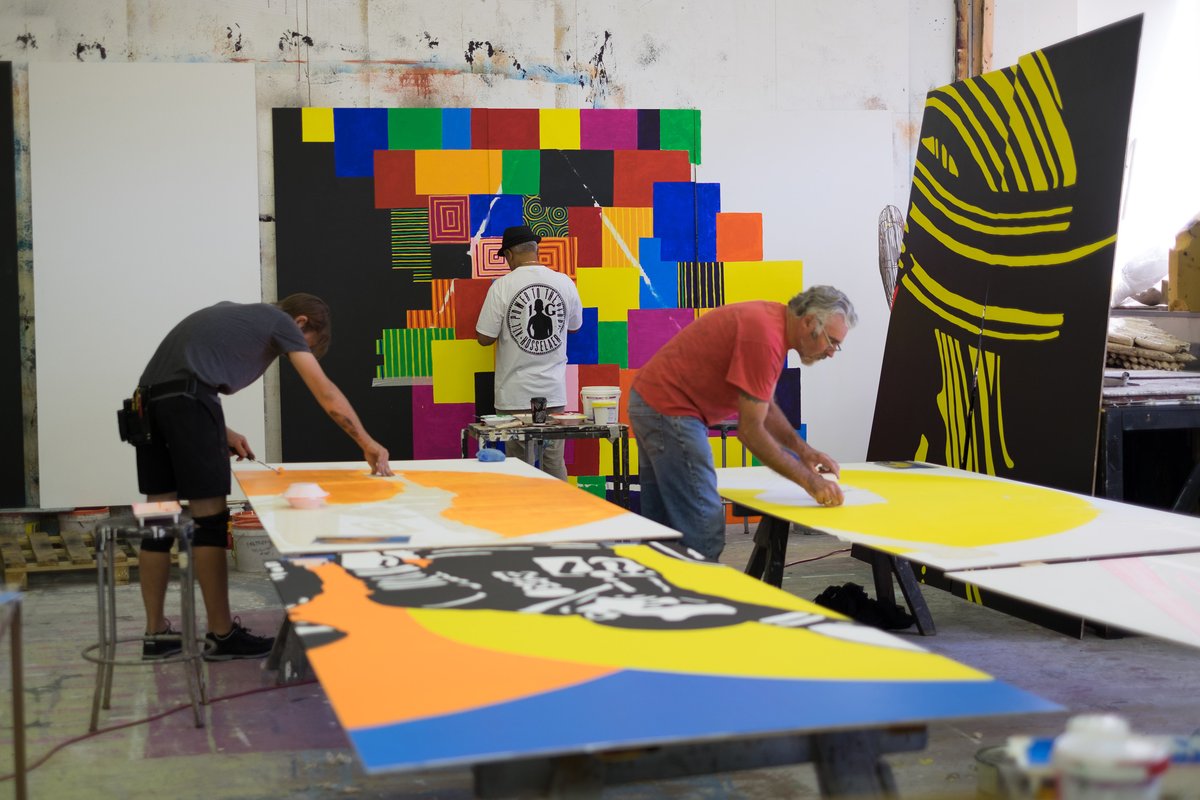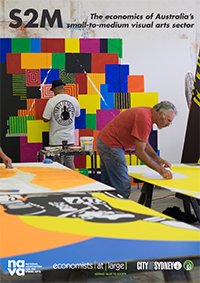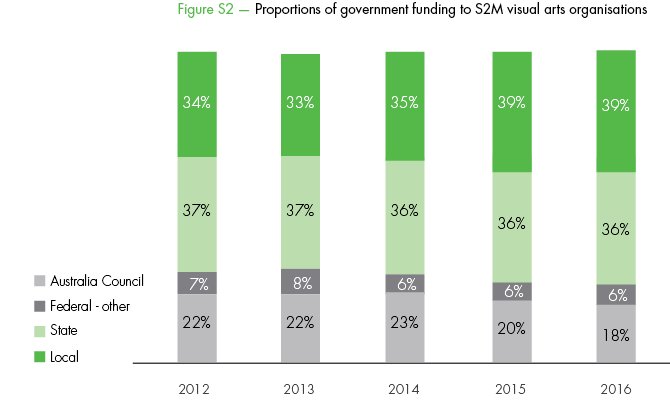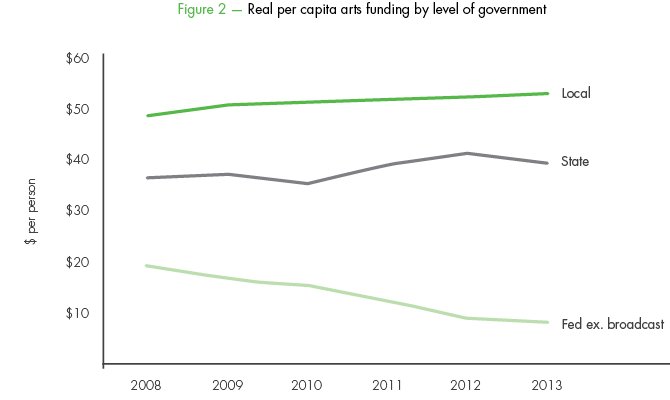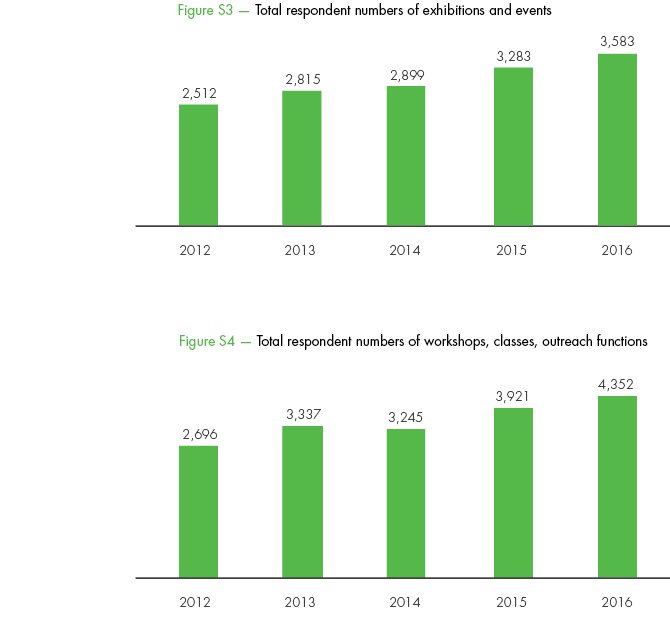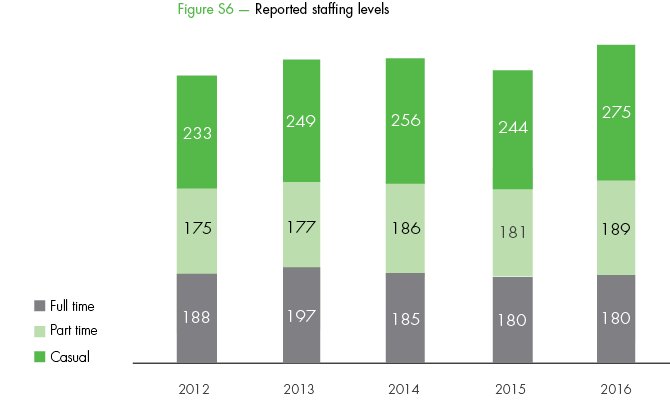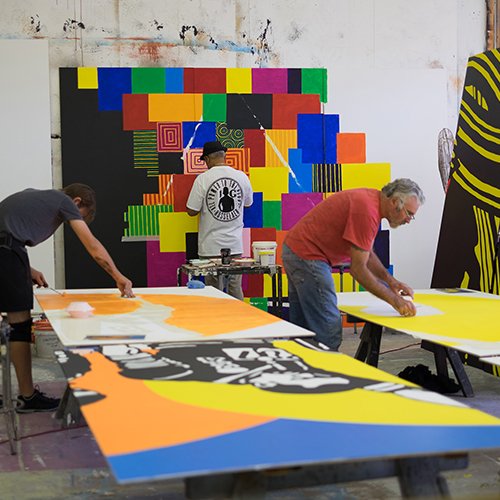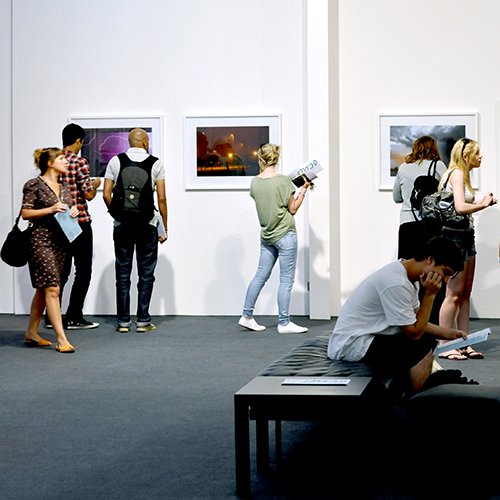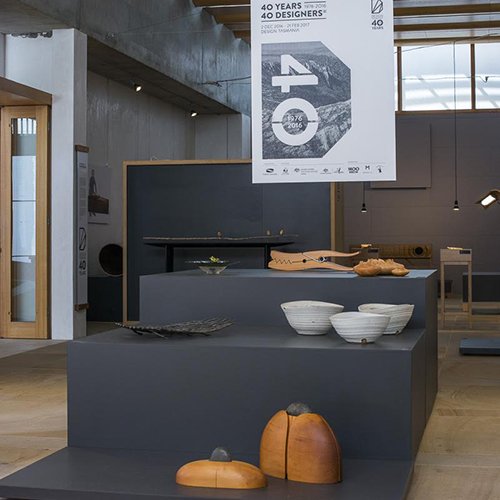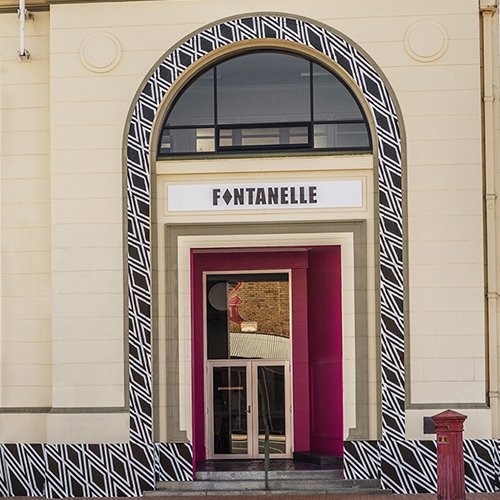In 2016, the report estimated that the 250 main visual arts organisations that make up the S2M sector will have:
• assisted the production of almost 26,000 new works of art
• supported over 7,000 artists
• held over 13,000 exhibitions and events
• run 15,000 workshops and classes
• received 6.2 million visits.
This will have been achieved with just:
• 583 full time staff, 599 part time staff and 848 casual staff
• 7,772 volunteers who provide over 278,000 hours of volunteer time, worth $17 million
• total revenue of around $103 million, consisting of:
- $42 million from local governments
- $19 million from state governments
- $12 million from federal government
- $30 million from other sources.
To put the funding of the S2M sector in context, the $103m revenue that funds new visual art is equivalent to:
• around 0.03% of the $360 billion Australian Federal budget
• less than 1/3 the $368 million revenue of Australia’s major galleries
• about equal to the $100 million 2016 revenue of the National Gallery of Victoria
• less than 1/5 of the $553 million NSW will raise from traffic fines and other penalties this year.
